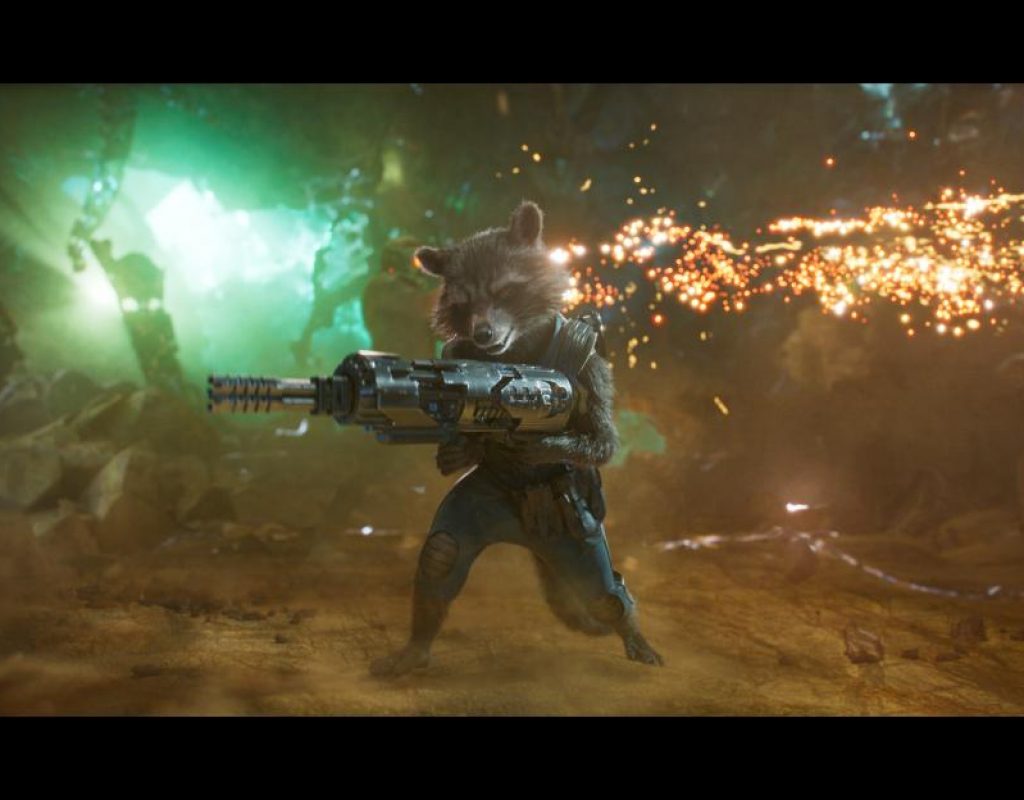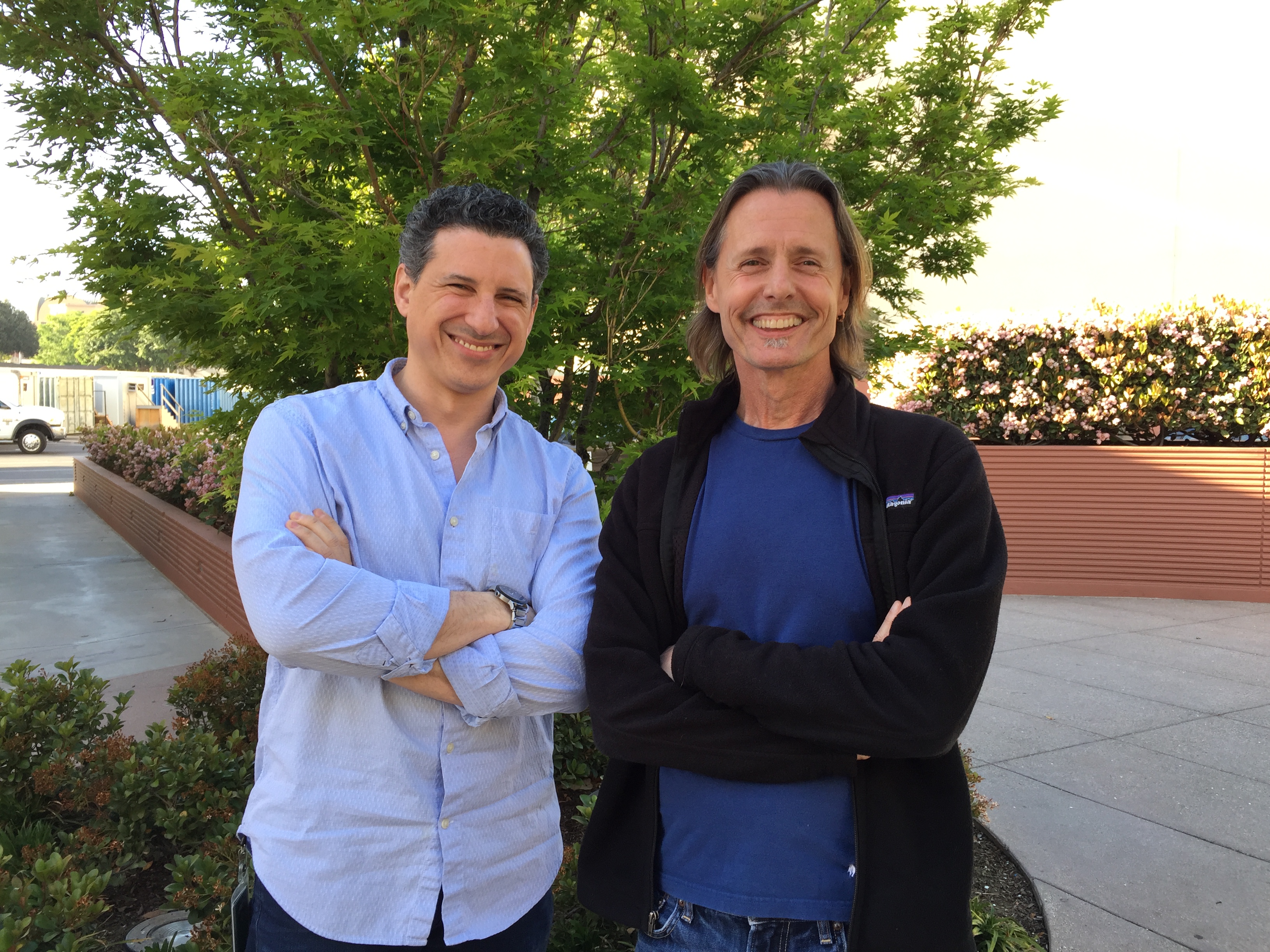 Fred Raskin, ACE has edited numerous films including Django Unchained, Hateful Eight (for which I interviewed him previously), and several of the Fast and Furious franchise. Craig Wood, ACE has dozens of films to his credit, including the first three of the Pirates of the Caribbean films, Tomorrowland, and Gore Verbinski’s very funny, Mousehunt.
Fred Raskin, ACE has edited numerous films including Django Unchained, Hateful Eight (for which I interviewed him previously), and several of the Fast and Furious franchise. Craig Wood, ACE has dozens of films to his credit, including the first three of the Pirates of the Caribbean films, Tomorrowland, and Gore Verbinski’s very funny, Mousehunt.
Craig Wood and Fred Raskin worked together on the original Guardians of the Galaxy movie, and that collaboration earned them (and co-editor Hughes Winborne) numerous editing nominations, including an ACE Eddie. They reunited for Guardians of the Galaxy, Vol. 2.
HULLFISH: What was the schedule like on Guardians?
RASKIN: I started on the second of February 2016, I believe, which was a week before shooting began. I came on to cut some previz. We were cutting previz up until probably three quarters of the way through the shoot. (they both laugh) Production began mid February and went until the end of June. When production began, Craig was working on another picture, so during production, my friend Kathryn Himoff was assembling the material with me, as there was way too much work for me to handle on my own.
WOOD: And I came on just before the end of June, so I picked up whatever scenes hadn’t yet been gotten to and we moved on from there.
HULLFISH: And you guys went until a month ago? A couple weeks ago?
WOOD: Yeah, the first week of April (2017) was our last.
HULLFISH: What were you working on, Craig?
WOOD: Well, I was slated to finish The Great Wall and I ended up being replaced on The Great Wall and went on and helped Gore Verbinski on his horror film A Cure For Wellness for several months before starting on Guardians.
HULLFISH: I did an interview on A Cure For Wellness. That was very interesting. I talked to the trailer editor on that, too.
WOOD: The trailers for that film were beautiful.
HULLFISH: I was going to ask what editors thought of the trailer cuts of their films…I was really struck by the transitions that must’ve difficult to go from the comedy of it to these really nice moments of personal revelation and emotion, so that you understand who the characters are and you care about them. Can you address some of those scenes where one moment it’s funny and the next moment…?
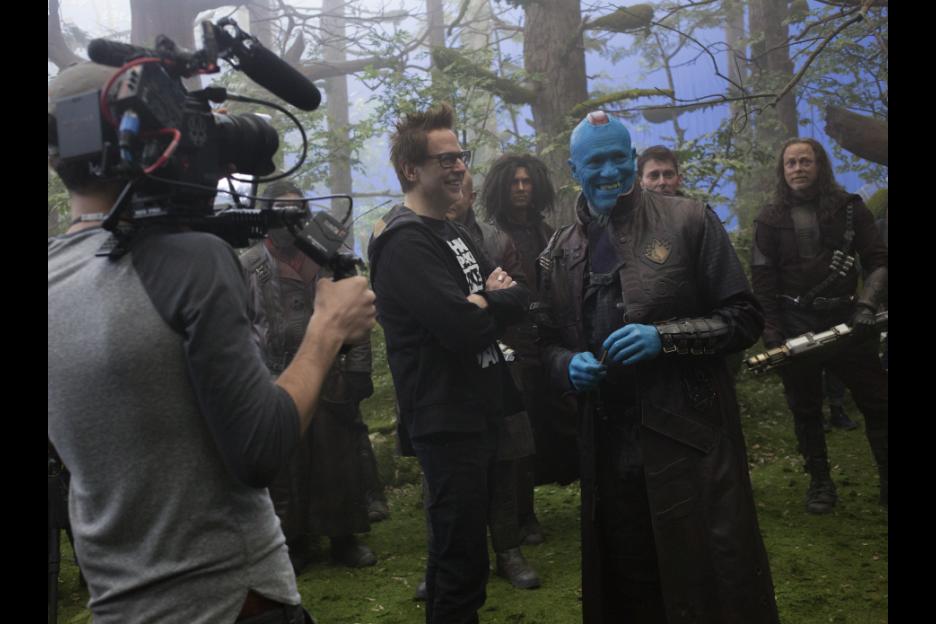 WOOD: I have to mostly give our credit to James Gunn for that one I think.
WOOD: I have to mostly give our credit to James Gunn for that one I think.
RASKIN: It’s all really in the script. Not to say that we didn’t make it sing but for the most part the transitions were really all in there at the writing stage. We enhanced them with the use of temp music and, of course, the source cues.
WOOD: And precise performance choices. We’ll give ourselves some credit for that.
HULLFISH: So a performance choice is a great point. In the scene when Rocket’s having the discussion and going back and forth with Yondu and he says, “”I know who you are, boy, because you’re me.”” And there’s that big moment of revelation. It’s an animated character but there’s also a human being in there. What was it like to cut those scenes with those big personal revelations in them?
RASKIN: From a technical standpoint, all the scenes with Rocket are shot with Sean Gunn standing in for Rocket for the first take of every set up so the camera operator knows how to frame the shot and the actors know where their eyelines are and we have something we can cut with, because all of the remaining takes are done without Sean in there. It’s an invaluable resource for us. Most actors usually get multiple takes to nail down their performances, but Sean really only got one or occasionally two, so he had to nail it. That would become the performance we were using to cut with, the performance that the animators were using as reference, and it was also the performance that the other actors were responding to.
WOOD: For the first cut of this scene, Rocket was performed by Sean, but Sean was also playing Kraglin. It was particularly confusing because he was playing both characters in the same scene.
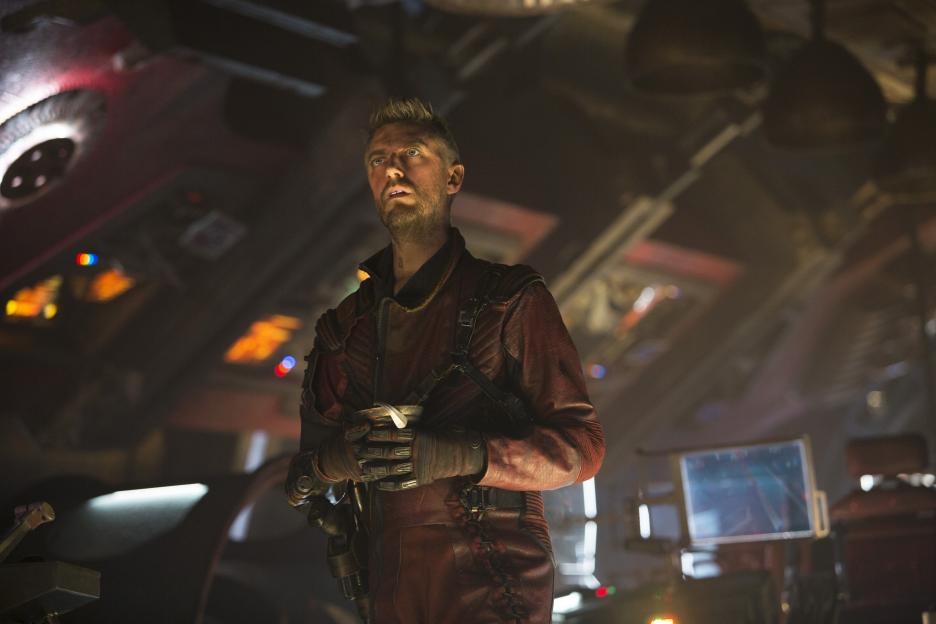 RASKIN: Typically, we were cutting from Sean in his Kraglin outfit to Sean in his Rocket sweatshirt. Sometimes comping them into the same shot.
RASKIN: Typically, we were cutting from Sean in his Kraglin outfit to Sean in his Rocket sweatshirt. Sometimes comping them into the same shot.
HULLFISH: Did he really wear a Rocket sweatshirt?
RASKIN: Yeah, he had a sweatshirt that had a little Rocket face on it. Spoiler alert: at the end of the movie, Sean played Adolescent Groot and he had a sweatshirt with a Groot face on it.
HULLFISH: When you’re cutting those scenes, did you cut them with him in the scene to have some sense of a person being in there or did you just go straight to previz or empty plate with the audio of him speaking?
RASKIN: For the dramatic stuff, we would use Sean. For the action stuff, it was a lot of cutting between previz and the live action footage of the shot, sometimes comping the previz with the live action footage of the shot.
WOOD: Sometimes the preferred take would be that first take anyway and we would have to paint Sean out before putting Rocket in, because we liked the performance of whoever he was talking to in that particular take. Sean would get down on his haunches to be the same height as Rocket and that presented a good eye line for the actors. When they got an actual pair of eyes to perform to it’s better for the performance and a much stronger eye line than imagining the space where Rockets eyes will be.
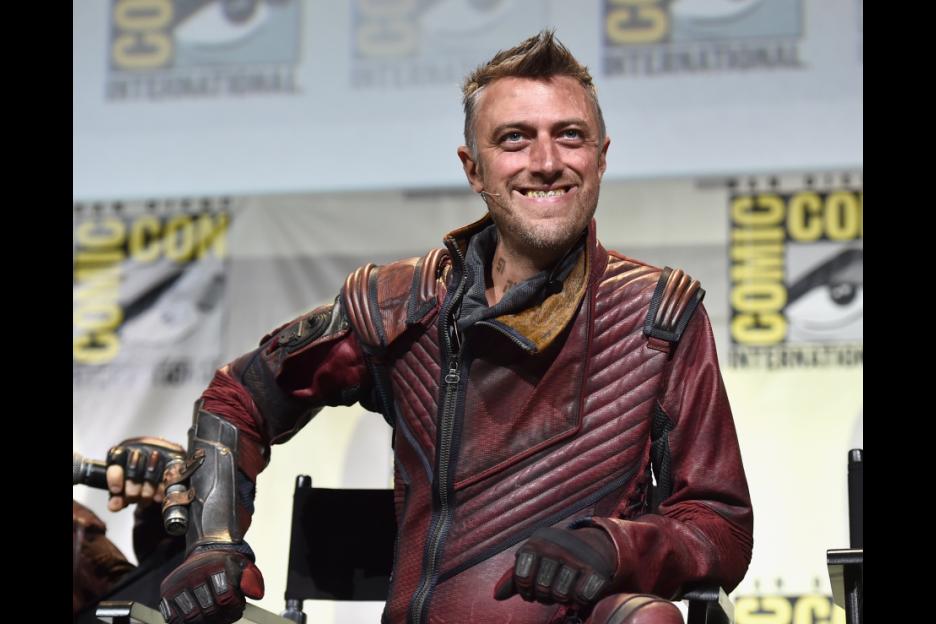 RASKIN: And I should also clarify that when I say they only did one or two takes, James was very aware of how reliant the animators were going to be on Sean’s performance. The camera rolled only once or twice but James frequently had Sean giving variations on his performance, saying, “Ok try it again like this” in that one take, so sometimes we ended up with twenty reads of a particular line.
RASKIN: And I should also clarify that when I say they only did one or two takes, James was very aware of how reliant the animators were going to be on Sean’s performance. The camera rolled only once or twice but James frequently had Sean giving variations on his performance, saying, “Ok try it again like this” in that one take, so sometimes we ended up with twenty reads of a particular line.
WOOD: There are a lot of series performances rather than new slates to keep it rolling and not brake the actor’s concentration.
RASKIN: So we were finding the Rocket performances in what Sean was doing originally, which would then get tweaked by Bradley Cooper giving his vocal performance and by the animators, who would do a combo of Sean and Bradley. And James frequently asked the animators to reference what Sean did, so that was always in our cut. But they would also get the video of Bradley Cooper from his ADR sessions so that if they needed to use anything from that, they had that option as well.
HULLFISH: Did you have to deliver those performances to the animators from editorial just like VFX turnovers?
WOOD: Yeah, they were given all that related video in the turnovers.
HULLFISH: Music’s a huge part of the franchise and of the movie. Was a lot of that scripted or did you come up with that with the director? A little bit of a combination?
WOOD: The source cues were pretty much all stipulated in the script, so James had figured it out. There are notable exceptions to that including the opening track, “Mr Blue Sky,” which for a long time was a totally different cue and a lot of animation and stuff had been done with a different cue with Baby Groot dancing to a different beat. Halfway through the process we decided we wanted a different cue. We went through a whole bunch of different alternatives because it was such an important decision to make.
 RASKIN: It was well over a dozen different options.
RASKIN: It was well over a dozen different options.
HULLFISH: I do these interviews mostly for fellow editors but for fans as well. Can you tell me any of the other choices for cues for that piece?
RASKIN: The original song choice is still in the movie. It’s in the end credits. “Flashlight” by Parliament.
WOOD: It was that cue for a very long time.
HULLFISH: That dancing scene is pretty much supposed to be one take but obviously you guys edited that. Tell me a little bit trying to cut that scene that looks like it’s uncut.
WOOD: Extensive previz was done for it where even the Guardians characters were animated characters as well. So all the timing was figured out and they used that so they knew what to shoot for the live action elements.
RASKIN: We started with the previs of the entire shot and there were, obviously, a bunch of live action elements that were shot like when Quill enters and gets knocked off-screen and Drax is getting battered and Gamora is waving at Groot. Those were all shot as individual elements that we basically cut into the previs to get the timing right and that went to our postviz department who incorporated the live action elements and adjusted what they had done in previs accordingly to get it all to fit – and then we changed the song and everything had to be re-animated.
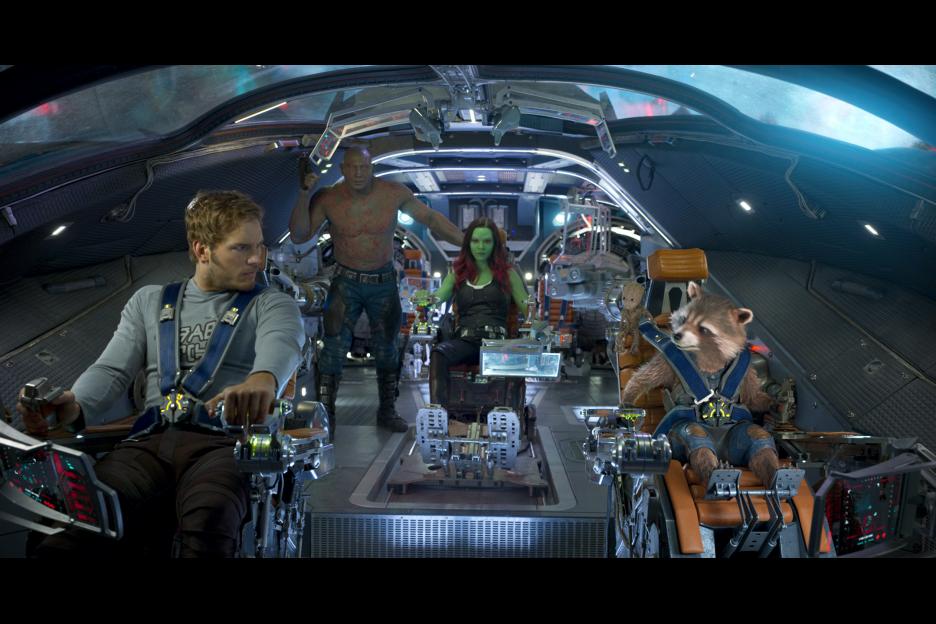 WOOD: Which hurt us in the long run because the fight going on in the background came in so late. It was while we were still mixing, there would be new laser blasts and explosions and they’d be missing in the soundtrack and we would have to go back and re-do that and re-sync them all. It was an endless, endless thing.
WOOD: Which hurt us in the long run because the fight going on in the background came in so late. It was while we were still mixing, there would be new laser blasts and explosions and they’d be missing in the soundtrack and we would have to go back and re-do that and re-sync them all. It was an endless, endless thing.
HULLFISH: When you guys were on the mixing stage, did you have access to your Avids? Or did you have to go back to a post suite to make those changes?
WOOD: Well, the changes aren’t made in the Avid. The updated picture is delivered to the sound stage on an almost daily basis.
HULLFISH: I just talked to somebody who was at Skywalker Ranch recently…and she said that she had her Avid right there so if she wanted to make changes in anything that she could either find audio cuts or find different performances or tweak stuff right there.
RASKIN: Throughout the visual effects process there would be changes happening in the picture. James would see something that he either liked or didn’t like quite as much and wanted to make adjustments to the length of those shots so we would do that in our editing room and then the sound department would update all of their tracks.
HULLFISH: I’m assuming that that opening crazy dance one-take thing was one of those things that you probably spend time doing in the previs for a couple of weeks?
RASKIN: Well, actually from an editorial standpoint, there wasn’t much to be done for that previs. It was completed before I even started on the movie. In terms of visual effects shots I think there were eleven different segments that comprised that shot.
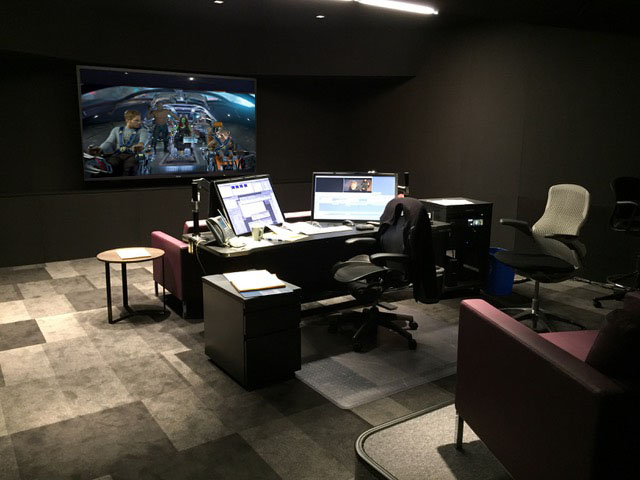
WOOD: Because it’s a music video, it’s a little bit easier to adjust previs because the length doesn’t change. So it’s just about deciding where all your sync hits are happening and that’s animation and James would’ve guided the animation.
HULLFISH: I was wondering during that previs section: was that a very technical thing for you to be doing or were you trying to make suggestions like “Oh, it would really be great to have a close up at this point” or “I feel like we’ve got three shots and I need to change the rhythm. Can I get something else to go here”? What was that like artistically?
RASKIN: At the time I came on, there were a few previs sequences that James felt were a little long; mostly stuff relating to the final battle. He just asked me to take a pass and see what I could pull out. Sometimes there would be things where it was like “Yeah I could really use this shot.” In the forest sequence we made a few changes to it. But it was pretty well prevised when I came on. It was mostly the final battle. That previs sequence ran well over a half an hour. And that one was the one that continued to be worked on throughout production. We had to alternate our time between cutting the new footage and cutting the previs. So it was definitely a busy production schedule.
HULLFISH: Most of the time, the editors I talk to don’t cut to music. You cut your scene, usually without music and add it at the end, if at all. But, you guys had to have been in a different boat with a lot of this movie. Large chunks had to have been cut after laying down a source cue first. Craig, you’ve cut a lot of music videos in addition to your film work.
WOOD: When it’s a source cue it’s a little bit more like a music video. Obviously there are actors, action that determines its own rhythm. But then there are specific moments you want to hit like a chorus hit or some big melodic thing in the source cue. And you make all these minor adjustments so that hits correctly with the music.
RASKIN: For a number of the cues, James knew he wanted to go to something specific at certain points in the song, some of which he shared with us beforehand. Sometimes we found out after we showed it to him when he said, “No no no this is all wrong.” [laughs]
HULLFISH: On those source cues that needed to change minutely, did you open them up, tighten them or speed-change them? Was there a music editor doing that kind of stuff? Or when you were editing did you find, “Hey, let’s turn off the source cue and just watch the visuals to see what the pace of that is?”
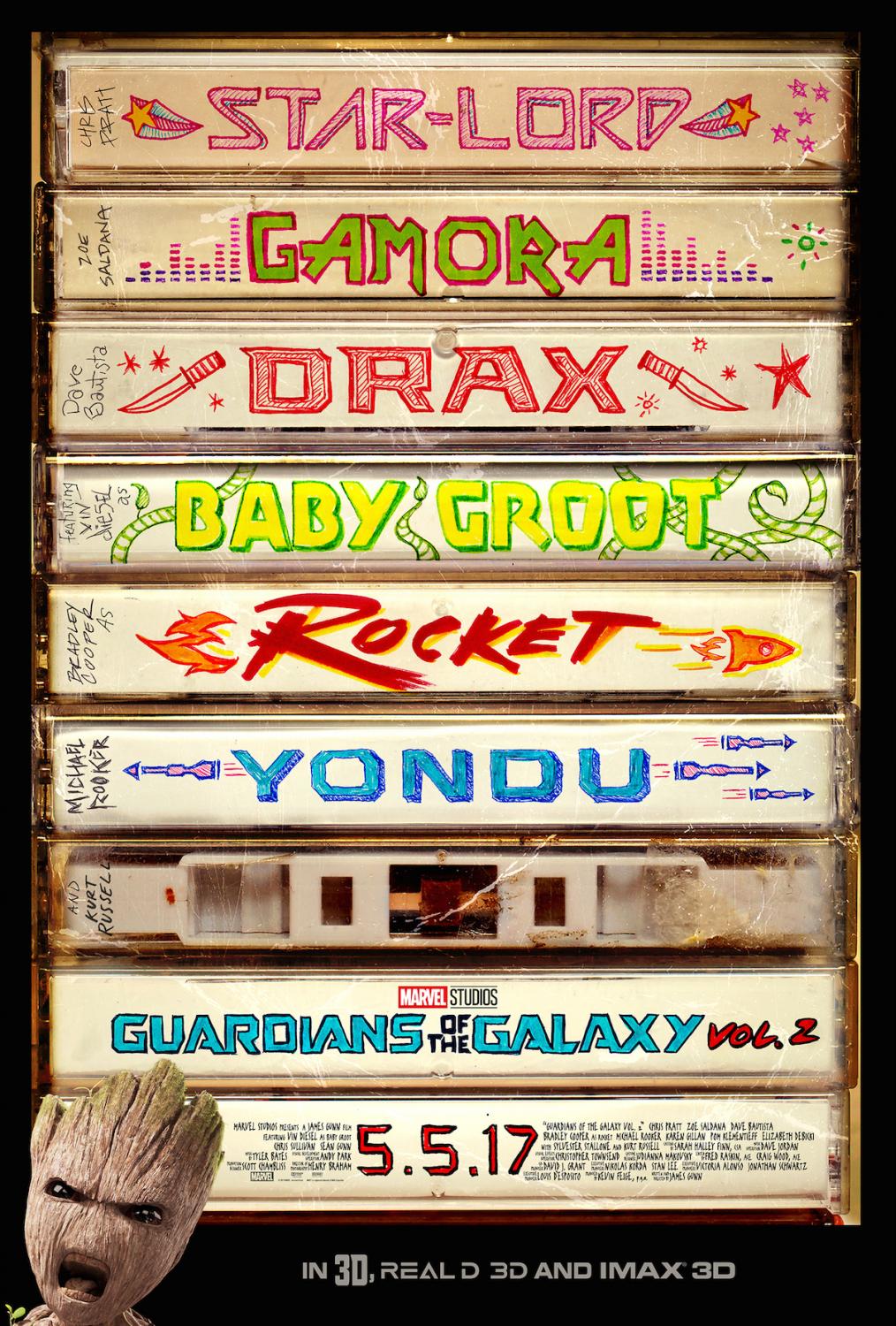 WOOD: Well you do a little bit of both of those things. There are a few internal edits in a couple of the source cues. We had a whole choir-driven version of this song that was created by the composer to give it this whole different vibe and elevate it. All of those things were explored.
WOOD: Well you do a little bit of both of those things. There are a few internal edits in a couple of the source cues. We had a whole choir-driven version of this song that was created by the composer to give it this whole different vibe and elevate it. All of those things were explored.
RASKIN: Most of the source cues in the movie have music edits. I think “Mr. Blue Sky” doesn’t and “Father and Son” doesn’t.
WOOD: Father and Son didn’t initially, but it was changed when we incorporated the reshoots.
HULLFISH: That’s interesting that a reshoot would cause the music to need to open up to some extent.
WOOD: Because things hit in a really specific way on both sides of where this piece was added and we got the music edit just to do a little repeat. But most people wouldn’t even notice.
HULLFISH: I’m interested in that choir extension that the composer did. Did you find that you needed a visual recut when that emotional change to the choir happened in that song?
WOOD: Well, it was done to actually adjust a problem that the scene felt a little long. It came when they’re escaping from the attack.
RASKIN: Yeah, Yondu, Rocket and Groot’s big escape sequence. Yondu’s shooting everyone with his arrow and Rocket’s shooting everyone with his guns.
WOOD: So we created this great pause that Yondu whistles in, and it launches into this big choir version of the song we’ve just been hearing.
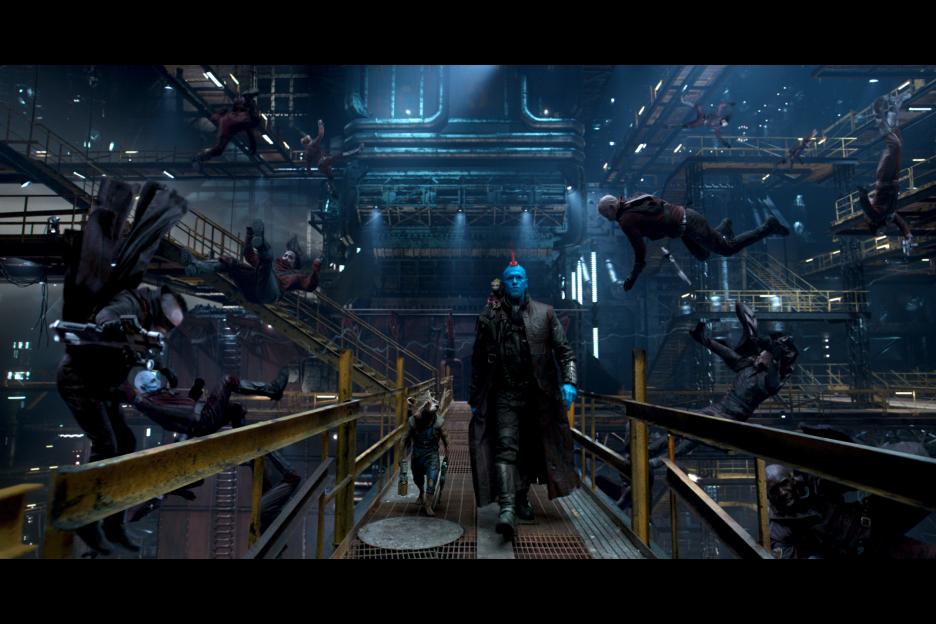 RASKIN: But as I recall, I think the picture was fairly locked at the time when Tyler did that. He wrote that to picture.
RASKIN: But as I recall, I think the picture was fairly locked at the time when Tyler did that. He wrote that to picture.
WOOD: There were some microscopic changes after that, but it was small.
HULLFISH: In Beauty and The Beast, the editor was saying those performances, sometimes, had to change in editing because they were recorded to the music, which at the time was just a synthesizer version that they edited to, but then when they got the orchestral version, there were minute changes in the speed and the tempo and the timing with each one of those hits and so she had to go back in and change timings of the visuals.
You mentioned you did do some temping with real score and everything’s not just a music cue. Do you recall some of the things you temped with or how you chose some of those things?
WOOD: Well we had the Guardians of the Galaxy I soundtrack to draw from.
RASKIN: Tyler Bates, the composer, requested that we use his music as much as possible, which is interesting because some composers want you to do exactly the opposite. Plus, he’d written maybe four pieces before we even began, pieces that James would play on set while he was shooting certain sequences, like the “celestial catch.” But the Guardians I soundtrack was our primary go-to, along with the sample pieces that Tyler had written specifically for this movie.
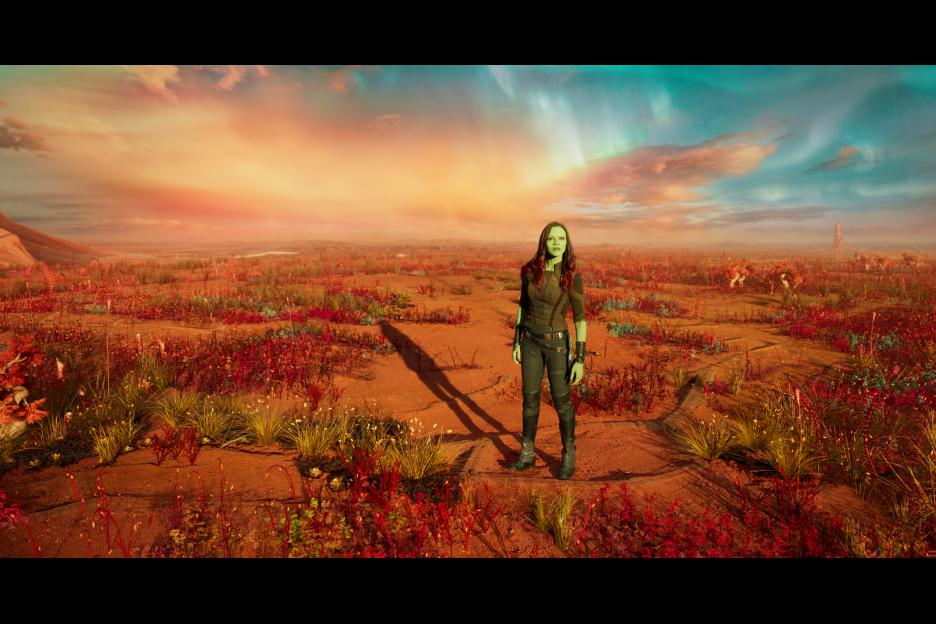 WOOD: There was one scene where we were quite happy to go without music. In the scene where Nebula chases Gamora through the desert and they have the hand-to-hand battle – we called that the North by Northwest scene. (If you see the film, you’ll know what scene this is) That whole scene plays without any score or source cue. Right from the beginning, James was very happy to do that and it gives you a nice break from constant music.
WOOD: There was one scene where we were quite happy to go without music. In the scene where Nebula chases Gamora through the desert and they have the hand-to-hand battle – we called that the North by Northwest scene. (If you see the film, you’ll know what scene this is) That whole scene plays without any score or source cue. Right from the beginning, James was very happy to do that and it gives you a nice break from constant music.
HULLFISH: Tell me a little bit about cutting that scene without music. Sound effects had to be a big part of the rhythm of it.
WOOD: Absolutely, it’s a sound effects driven scene. That’s actually the first thing that I got to cut in the film. Because it’s purely action, it could initially be cut silently. Then I’d place all the key sound effects in. It’s interesting what happens then, ‘cause you adjust the rhythm of the picture based on sound hits because that does become your music.
HULLFISH: You need to account for the rhythms, and add space to put the sound effects in your picture cut.
WOOD: It’s most interesting in fights where you’ve got punches. I did the first three Pirates movies and it’s all sword clanks… endless sword clanks… but they’ve got a musical rhythm to them, so you adjust the picture to make the sound rhythm work.
HULLFISH: I love that you called it North By Northwest. That’s great.
RASKIN: Well, to be fair, the visual effects department was calling it that long before we even came onto the movie.
HULLFISH: I never thought about the parallels to the famous bi-plane/Cary Grant scene in North by Northwest until you mentioned it.
https://www.youtube.com/watch?v=tjRPLfZmao0
WOOD: Because it’s missing the wheat.
HULLFISH: Let’s talk about how you approach a scene.
RASKIN: At the end of every shoot day we would watch the dailies with James. It was a long shoot day and his desire to watch two hours worth of footage every night was not so great so it would be more like the last one or two takes of every setup and frequently he would high speed through some of it, but he would point out the things that he really liked. So we had a place to start from in terms of what he liked. Obviously, as you’re putting the scene together, sometimes a specific thing that he pointed out – there’ll be another angle where that moment works better and you’ll end up using that. But it’s a good guide at least to start with. After that dailies screening, I would go back to my avid and put markers on anything in that footage that James had responded to. Then I would just watch everything, and mark specific moments that I liked. As I got midway through watching all of the coverage, I’d kind of find myself figuring out how I was going to at least initially structure it and usually by the time I’d watched all of the dailies, I had a pretty good sense as to the overall structure of the scene and where I wanted to be when. And then I’d start putting it together and using either the performances that James specifically mentioned or a similar performance or if I saw something really different and interesting like, “Oh that could be cool”, I’d try something like that. Once I had it all structured, I would go back and watch those same moments from all the other takes to make sure that I’d found the best ones because frequently you get asked the question, “Is that the best one?” and you respond, “Oh, you wanted me to use the best one?” [laughs] With a movie like this, there are other challenges when you have CG characters, like what do you cut to? With Rocket, as we just discussed, we had Sean to cut to, but with Groot frequently there was just a maquette of Groot that production had shot for a lighting reference. Sometimes there was just a stick in the floor and you would type on the screen, “Groot does this action.” And sometimes you wanted Rocket to do something more quickly than Sean did it, or you just wanted him to do something different, so you’d type that action on the screen. The first pass of the movie had lots of titles.
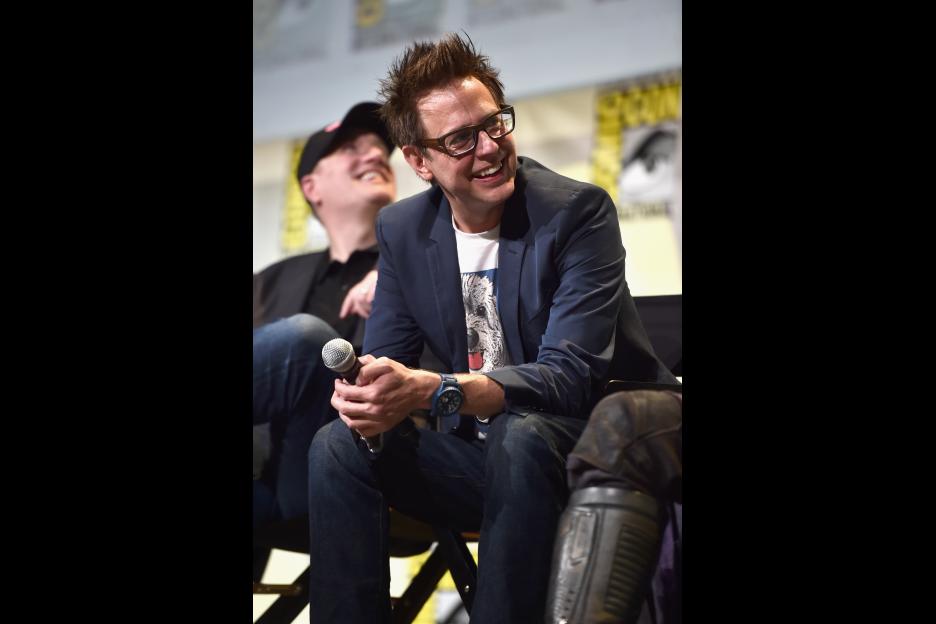 HULLFISH: That’s a huge blessing to be able to have the director sit down during the shoot to watch dailies. There’s not a lot of people that get that opportunity.
HULLFISH: That’s a huge blessing to be able to have the director sit down during the shoot to watch dailies. There’s not a lot of people that get that opportunity.
WOOD: It can go both ways. I actually like to just react first myself and then get the directors reaction, sometimes “Nope, I had this moment in mind.” And sometimes “I never thought of that.” So there’s a plus on both sides. They are often tired when they’re watching dailies, they fast forward, they’re looking at their footage for different reasons to make sure they got what they needed. They’re checking camera angles and they’re not really thinking so much about the editorial but the occasional, “I love that! That’s useful.”
HULLFISH: Their assessment of the performances and of the shots and the value of various takes is very different watching dailies than watching later, right?
WOOD: Absolutely. And I love to have my own reaction to the footage that’s removed from any residual reaction to being on the set. I think of it as what the footage is worth, removed from how hard it was to film. You’re guided by camera moves sometimes. You can see they’ve done a particular camera move twenty times – well, they want that in the scene. You get those sort of markers in the scene and that gives you a shape to begin with.
HULLFISH: Do you want to expound anymore on that or would you say that’s what your approach is?
WOOD: I do approach looking at the dailies slightly differently to Fred. I create what I call a select sequence. It’s not really a select sequence though. I’m sort of putting every single line of every single performance next to each other. Some editors would have their assistant do it and it’s called a string out. But I like to do it myself because it’s how I look at footage and consider how it might be constructed. So I’m putting all the performances next to each other and I can always play them all back.
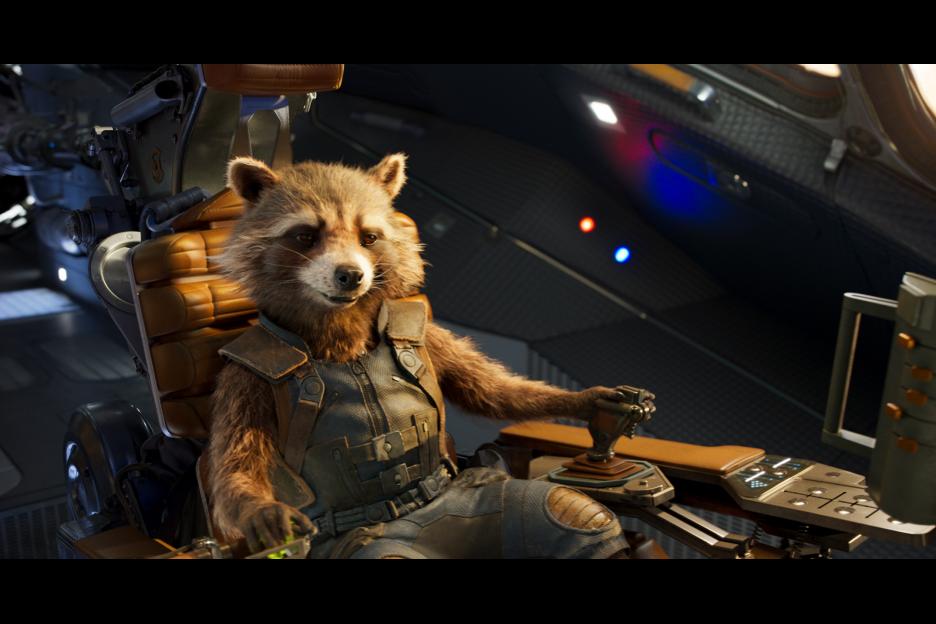 HULLFISH: When you’re doing that, do you have a strategy for remembering or marking which ones you’re saying yes and no to? Some people put them on different levels of tracks, like the decent ones are on track one, the good ones are on track two and the great ones are on track three? Are you using markers?
HULLFISH: When you’re doing that, do you have a strategy for remembering or marking which ones you’re saying yes and no to? Some people put them on different levels of tracks, like the decent ones are on track one, the good ones are on track two and the great ones are on track three? Are you using markers?
WOOD: Occasionally we use locators, but I’d rather build this thing and become familiar with all the footage, which takes me the most time in doing a scene and then I just start cutting from that. It becomes a resource to link back to the full take because obviously I’m not putting every reaction in so it’s just a tool I use.
HULLFISH: I do the same exact thing. That’s my approach as well. Do you find that also helps you when the director comes in and says, “Did you use the best take?” Because they’re already assembled. You don’t have to go track them down in a bin.
WOOD: When we’re dealing with comedy, there’s a lot of ad libbing that goes on so there are different versions of jokes that can be tried. And often we can start this scene with a couple of different options for a particular joke line. One of my favorite changes Fred made was the bit where Quill says “if what I’ve got between my legs had a hand on it” because it wasn’t cut that way initially at all. It was a bit straighter in the script and Fred tried this one and I laughed for five or ten minutes.
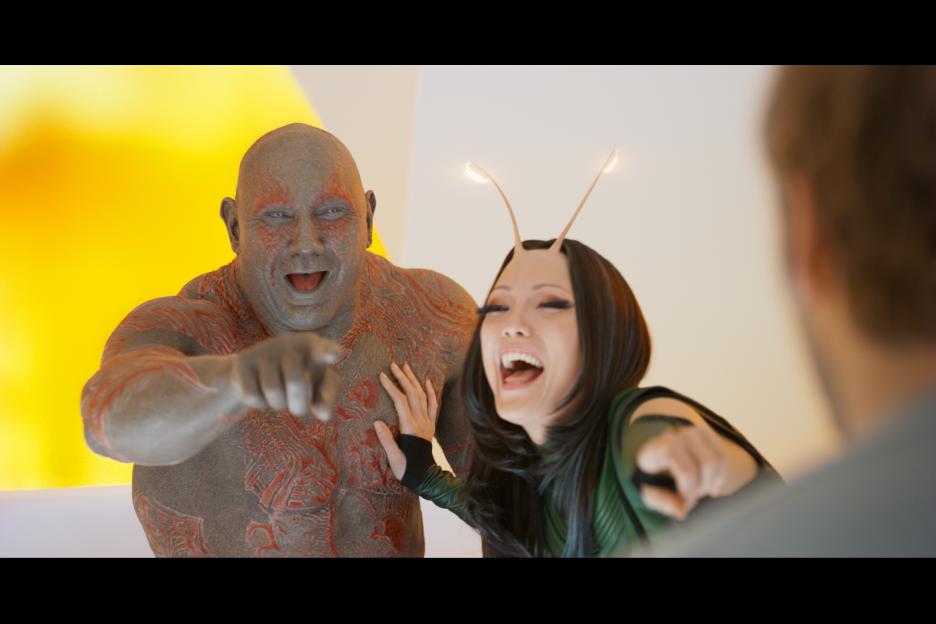 RASKIN: It’s funny. That was one that I’d seen when I was assembling the scene and thought, “No, this is too much.” Then Kevin Feige mentioned it in an exec meeting and I tracked it down and realized it was far better than the scripted line. One other thing to mention about the process on this movie that made it a bit more challenging is that we had to have 60% of the VFX turned over to their vendors by the end of production. This meant “locking scenes” long before we were done shooting so it could all be turned over.
RASKIN: It’s funny. That was one that I’d seen when I was assembling the scene and thought, “No, this is too much.” Then Kevin Feige mentioned it in an exec meeting and I tracked it down and realized it was far better than the scripted line. One other thing to mention about the process on this movie that made it a bit more challenging is that we had to have 60% of the VFX turned over to their vendors by the end of production. This meant “locking scenes” long before we were done shooting so it could all be turned over.
WOOD: That’s with the knowledge that there’s a percentage of changes to happen later. And there were quite a few.
RASKIN: But James was actually incredibly generous with his time not only in actually bothering to watch dailies but also during production he would come in on the weekends to look at what we had done and help us refine the scenes to his taste so that we could feel at least somewhat confident that what we were giving to the vendor was close.
WOOD: And James was really good with being consistent. He stays on his path that he had in his head from I imagine when he wrote the screenplay to the very end.
HULLFISH: Usually, the editor gets to the end credits and they’re done, but you guys really had to do some work once the credits started rolling.
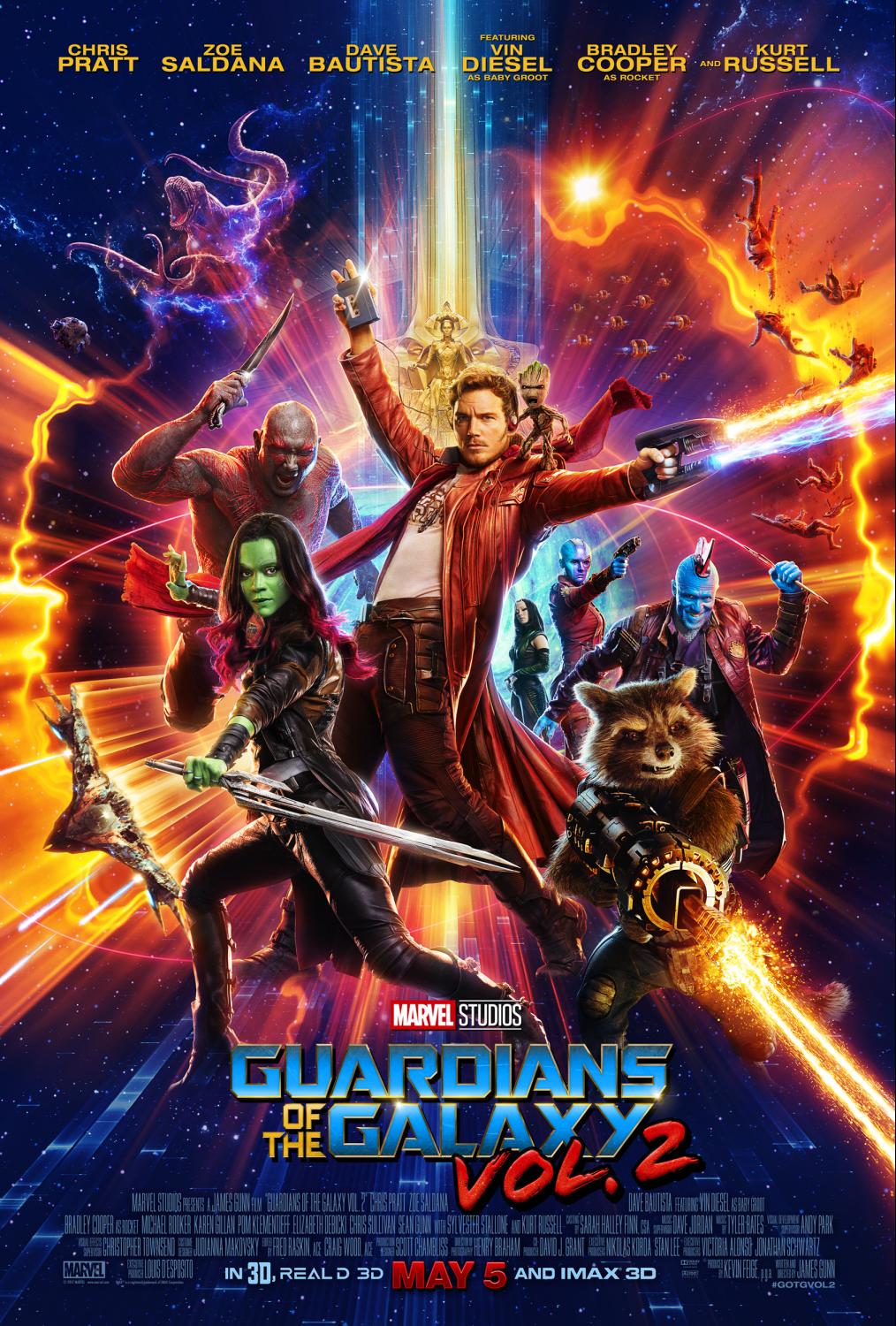 WOOD: Marvel love having these end tags on their films. They found it highly amusing that this film has the most credit tag scenes of any Marvel film.
WOOD: Marvel love having these end tags on their films. They found it highly amusing that this film has the most credit tag scenes of any Marvel film.
HULLFISH: A lot of people have talked to me about the fact that no action movie works unless you care about the characters.
RASKIN: I hate to keep falling back on this, but in terms of how much you care about the characters, it’s really all in the script. I also want to give James credit for starting as early as he did. It was something in the realm of sixteen months before shooting began that he started writing. He really had an idea in his head as to what he wanted to do and didn’t want to waste any time getting there. He’d didn’t want to be one of those guys who shows up on set with a screenplay that’s not one hundred percent where he wanted it to be. I think your caring about the characters reflects on that.
WOOD: We have parallel story lines going with our primary characters in this one, unlike in the first Guardians. We have Peter/Ego, Gamora/Nebula, Mantis/Drax and Rocket/Yondu, as well as some recombinations of all of them. I think of it as character pairs that continue throughout the film and it was important to create a rhythm of revisiting those character pairs. We’re always going back to them when we most want to go back to a particular character pair to advance the story and the emotional arcs.
HULLFISH: Let’s talk about precisely when do you cut back and forth between an A and a B story line? I’m guessing some of those changed from the script.
WOOD: Yeah there were a few of those but not many. But just moving some of those cutbacks that got shuffled a couple of times until we were happy with them.
HULLFISH: And do you remember what those discussions were about or why, in general, those shuffles happened?
WOOD: Well, it was rhythm and if we had a long section of dialogue, we needed to get to an action scene: the Drax-Mantis scene on the stairs there was a lot of discussion about where that should go.
RASKIN: With Drax telling Mantis how hideous she is.
WOOD: And Drax starts thinking about his wife and daughter from the past and gets quite emotional. That’s one of those things that’s hilariously funny and then becomes quite moving and shifts back into comedy. But you couldn’t just cut straight from our Ravagers storyline to that, which was suggested at one point but felt weird when we did that. So there was shuffling around until that felt right.
HULLFISH: What was the solution with that?
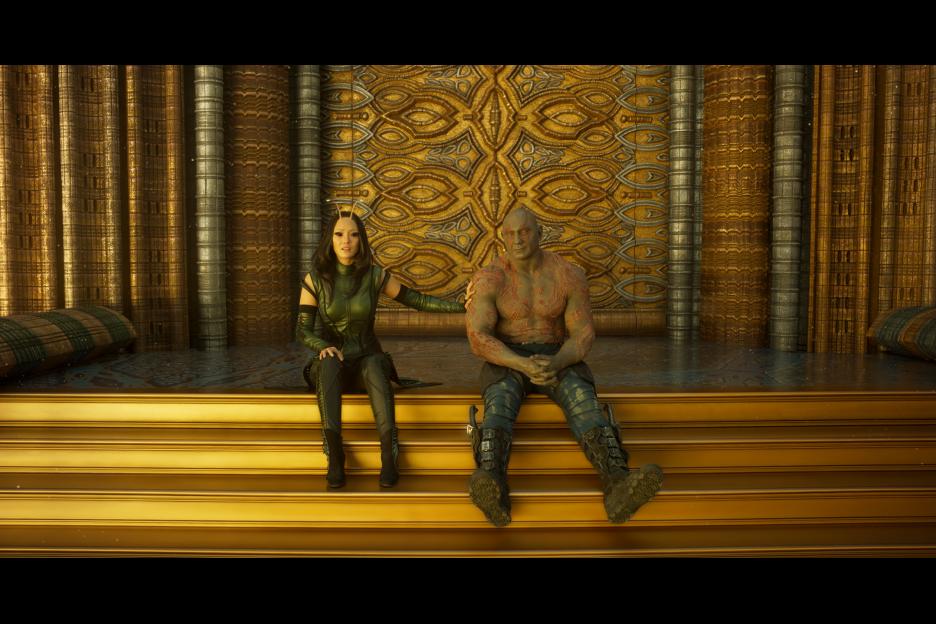 WOOD: The solution was that we had to first go to Ego and Quill and then to Mantis and Drax. The big story was the Ego-Quill story, the smaller story was Drax-Mantis.
WOOD: The solution was that we had to first go to Ego and Quill and then to Mantis and Drax. The big story was the Ego-Quill story, the smaller story was Drax-Mantis.
RASKIN: We experimented to see if it was going to be more engaging if we did more cutting between the characters or if we stayed in one place for longer. I think we tried a version where we did more intercutting between what was happening on the Ravager ship and what was happening on Ego’s planet.
WOOD: There’s often a sense that if you’re cutting multiple stories more often it’s going to be more exciting, but it really takes you out most of the time. The audience wants to be grounded in a scene rather than chopping them up all over the place.
HULLFISH: A lot of times the script is cutty like that, much more fast cuts between one storyline and the other because when you’re reading it, you kind of need that visual energy on the page, but when you’re watching a film, you’ve got this deeper emotional attachment that needs to stay continuous. So many people think pacing is this shot-to-shot pacing, but there’s also the overall pacing of the story itself and how it plays out.
WOOD: I always have to watch whole reels down, just to feel the rhythm. I watch from the beginning of a reel then stop when somethng takes me out , adjust it then go back to the beginning again. It’s just feeling moments of the movie in their context.
HULLFISH: And did screening or previews have an effect on, “Oh the end needed to be sped up?”
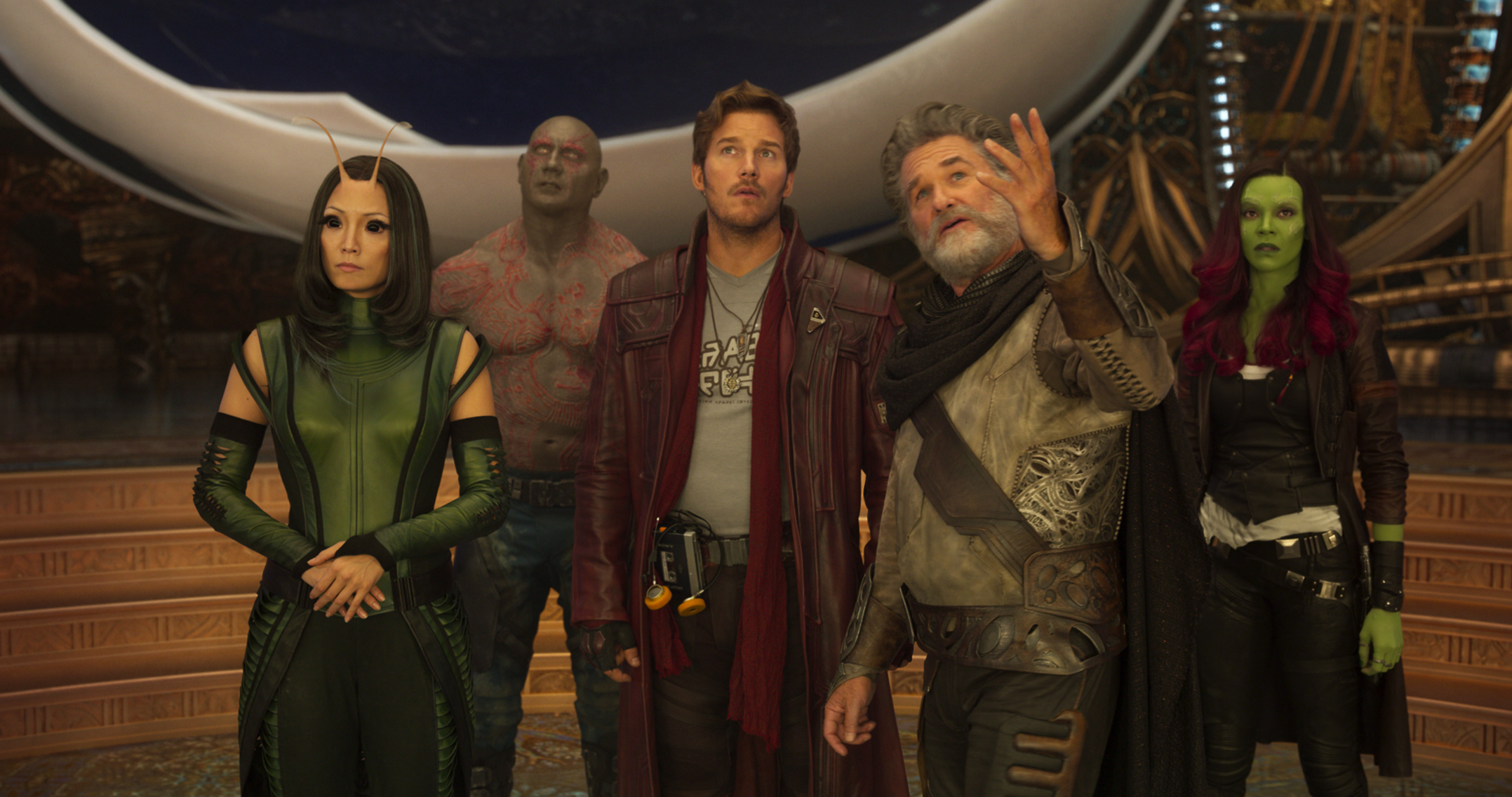
WOOD: We certainly learned things mostly about how long things should play but also about some character arcs. The way Quill and Gamora react to Ego was changed with reshoots after a very early screening.
RASKIN: There were some jokes that just didn’t get reactions.
HULLFISH: Did you play scenes for each other?
WOOD: We both play each other’s scenes and have minor notes usually and then you go, “Oh yeah I can see that.” That’s the beauty of having a partner. Sitting with someone else you’re feeling it in a different way instead of just watching it by yourself because you’re in the mechanics of cutting it when you’re cutting by yourself and then you’re just watching it as an audience but through someone else’s eyes.
HULLFISH: One editor said that he’ll play a scene for anyone – even the janitor.
RASKIN: I should also mention that the janitorial staff at Disney gave phenomenal notes.
HULLFISH: Any thoughts on the editorial decisions or challenges of editing these scenes:
RASKIN: This was one of my favorite scenes to cut. I really enjoy cutting action, and my favorite stuff to cut with the Guardians is when the whole team is bantering together. This sequence, maybe more than any other in the movie, is the perfect fusion of that. The challenge here was to maintain the proper balance between the dialogue sections and the exterior shots of the aerial battle so that you didn’t lose the tension of the battle. As a result, we ended up removing a number of very funny lines, because they were throwing off the pace of the sequence.
RASKIN: Craig put this one together, and I have to give him a lot of credit, not only with regard to the comic timing of the cuts, but also the off-camera sound effects. He figured out just how much to keep the battle alive, and, as we were cutting in 7.1, he had those sounds moving all around the left side of the room. (This comes into play more in the section of the scene that follows this clip, with Quill asking everyone for tape, but you get a sense of it here as well.)
WOOD: I love that we were able to stop in the middle of the 3rd act action climax and have this intimate funny scene. It was cut first as a radio play to decide vocal performance choices and the rhythm for the scene, only going to live action for the Quill interjections. Then I laid over some very basic previz to depict the cuts and camera angles.
RASKIN: This is a good example of a lot of stuff I spoke about earlier. In this scene, I see a lot of Sean Gunn in Rocket’s physicality but also Bradley Cooper in some of his angrier facial expressions. And when he turns to Quill and says “Don’t call me a raccoon!” that was one the animators had to do without reference, as we sped it up significantly from how it was performed on set. The animators were working off of text on the screen.
RASKIN: This was the first scene shot in the movie. I actually went down to set to watch some of the shooting (I wasn’t getting dailies until the next day), and I was blown away by how effortlessly all of the actors had slipped back into their roles. The set was literally just the floor and a giant blue screen, so this one had to be heavily postvizzed before we could tell if it was working. There was nothing even representing the creature on set.
WOOD: This scene ends just before an interesting change that occurred with reshooting in post production. As scripted Quill was enthusiastic and trusting at meeting his father, and Gamora was the suspicious one. The reshoots reversed that. Quill was made suspicious and angry that his father abandoned his mother and him. This made for a much more interesting character arc for Quill, giving him a less passive roll through the middle act of the movie, and at the same time softened Gamora.
RASKIN: This scene is an interesting one, as it might be the only one I cut in the movie that James approved immediately upon watching, with no notes. But as we were going through the movie as a whole, we felt we needed to strengthen the connection between Ego and Quill throughout, and so we hunted for little moments that might accomplish that. The most significant one here is when Quill smiles proudly after Ego refers to him as Star-Lord – it gets one of the best laughs in the movie, and I hadn’t even used it in my first pass. Also, I’d be remiss if I didn’t mention that the bit with Rocket touching his snout here is pure Sean Gunn.
HULLFISH: One last question just about working together… two editors or more on a single picture.
WOOD: On these big movies you just can’t do them alone. I’ve tried it a couple of times and it’s just so hard. The editors are pretty focused on everything involved in finishing the film. It’s not just the picture cut. It’s the sound, music, color-timing, visual effects, everything we have a little bit of control over. You’ve got to divide and conquer on these big movies.
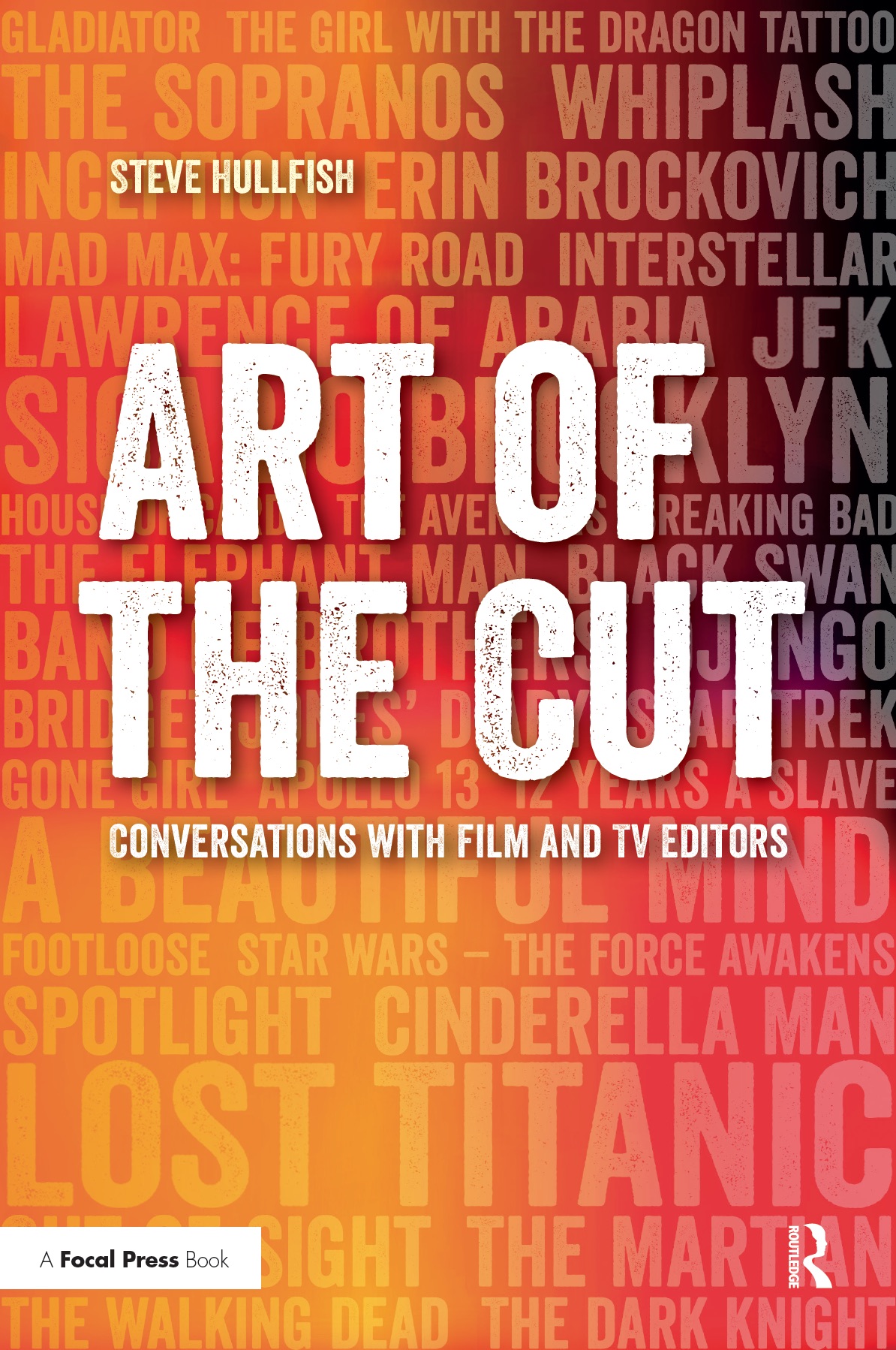 HULLFISH: Of course the other advantage is just having another person to bounce these ideas off of.
HULLFISH: Of course the other advantage is just having another person to bounce these ideas off of.
WOOD: It’s incredibly valuable. If the guy’s the right person. And this guy is the right person.
RASKIN: What he said.
To read more interviews in the Art of the Cut series, check out THIS LINK and follow me on Twitter @stevehullfish
The first 50 Art of the Cut interviews have been curated into a book, “Art of the Cut: Conversations with Film and TV editors.” The book is not merely a collection of interviews, but was edited into topics that read like a massive, virtual roundtable discussion of some of the most important topics to editors everywhere: storytelling, pacing, rhythm, collaboration with directors, approach to a scene and more. Oscar nominee, Dody Dorn, ACE, said of the book: “Congratulations on putting together such a wonderful book. I can see why so many editors enjoy talking with you. The depth and insightfulness of your questions makes the answers so much more interesting than the garden variety interview. It is truly a wonderful resource for anyone who is in love with or fascinated by the alchemy of editing.”

Filmtools
Filmmakers go-to destination for pre-production, production & post production equipment!
Shop Now